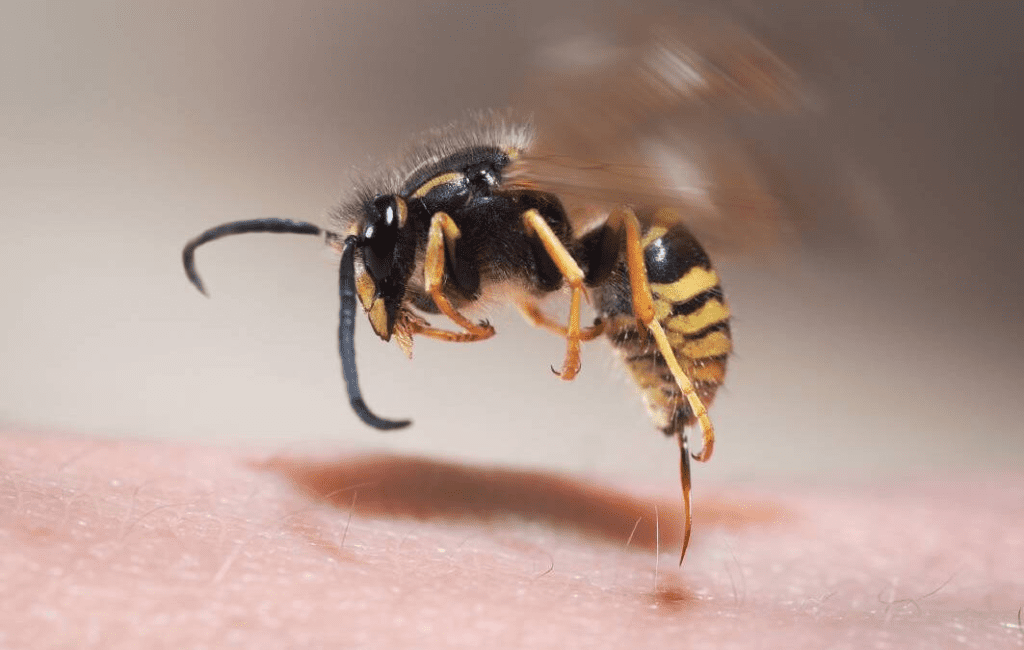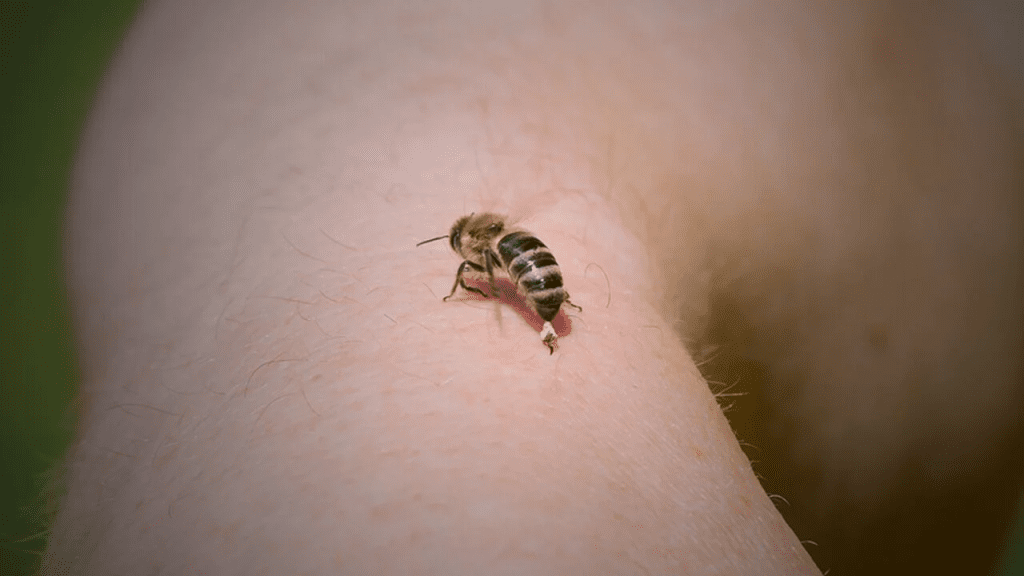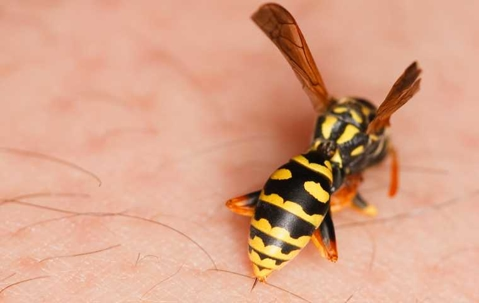Getting stung by a wasp is never a pleasant experience. Whether you’re out for a walk, enjoying a picnic, or simply minding your business in your backyard, a wasp’s sting can leave you in pain and discomfort. But while it’s natural to feel panicked or scared, it’s important to stay calm and handle the situation effectively. If you ever find yourself in this unfortunate scenario, here’s a step-by-step guide on what to do when a wasp stings you.

1. Stay Calm and Move Away from the Area
The first thing you should do when you’re stung by a wasp is to stay calm. Yes, it’s easier said than done, but panicking can make the situation worse. When you’re scared or agitated, your movements become erratic, and this can attract more wasps or even make the current one more aggressive.
- Why Calmness Matters: Wasps, like many insects, are attracted to sudden movements. So, instead of swatting at the wasp or running, it’s best to calmly move away from the area. This will reduce the likelihood of further stings.
- Keep Your Distance: After moving away from the immediate area, find a safe spot to assess your injury. If there’s a wasp nest nearby, avoid drawing attention to it to prevent more stings.
2. Remove the Wasp Stinger Quickly and Gently
If the wasp left its stinger in your skin, it’s essential to remove it as soon as possible. Wasps typically don’t leave their stingers behind, but if they do, it can continue to release venom into your body. Here’s how to remove it:
- How to Remove the Stinger: Don’t use tweezers, as squeezing the stinger could push more venom into your skin. Instead, gently scrape the stinger out with the edge of a credit card or your fingernail. The goal is to remove the stinger quickly without causing further irritation.
- What to Avoid: Avoid pinching the stinger or using anything sharp to remove it, as that can lead to more venom being injected into your skin.
3. Clean the Area to Reduce Infection Risk
After removing the stinger, the next step is to clean the affected area. Washing the sting site helps remove any dirt, bacteria, or wasp venom that might lead to infection.
- How to Clean the Sting Site: Use soap and water to gently clean the area. This will help reduce swelling and prevent infection. It’s also a good idea to apply a small amount of antiseptic afterward to ensure the area stays clean.
- What to Avoid: Don’t scrub the sting site too aggressively, as that can make the pain worse. A gentle wash is all that’s needed.
4. Apply Cold to Reduce Swelling and Pain
One of the quickest ways to alleviate the pain and swelling caused by a wasp sting is to apply something cold to the area. Cold temperatures help numb the pain and reduce inflammation.
- Cold Pack or Ice: Wrap some ice in a cloth or use a cold pack if you have one available. Apply it to the sting site for 10 to 15 minutes at a time. If you’re using ice, make sure to never apply it directly to your skin—always use a cloth or towel as a barrier.
- Why Cold Works: The cold constricts blood vessels, which helps minimize swelling and slows down the venom’s spread. This provides relief from the sting’s discomfort.

5. Pain Relief and Antihistamines
Wasps inject venom into your skin when they sting, and this venom is what causes pain, swelling, and redness. For quick relief, over-the-counter pain relievers and antihistamines can be very helpful.
- Pain Relief: Non-steroidal anti-inflammatory drugs (NSAIDs) like ibuprofen or aspirin can help reduce pain and inflammation. Just be sure to follow the dosage instructions.
- Antihistamines: If the sting causes itching or a rash, an antihistamine like Benadryl can help reduce these symptoms. Always follow the instructions on the packaging and consult with a healthcare provider if you’re unsure.
6. Monitor for Allergic Reactions
While most wasp stings result in mild pain and swelling, some people are allergic to wasp venom. If you notice any signs of an allergic reaction, it’s important to seek medical attention immediately.
- Signs of an Allergic Reaction: Severe swelling, particularly around the face, lips, or throat, difficulty breathing, dizziness, or nausea are all signs of an allergic reaction. In these cases, call emergency services right away.
- What to Do in an Emergency: If you have an epinephrine auto-injector (EpiPen), use it immediately if you’re allergic to insect stings. If you don’t have an EpiPen and you experience severe symptoms, head to the nearest emergency room as quickly as possible.
7. Preventing Future Wasps Stings

The best way to deal with a wasp sting is, of course, to avoid getting stung in the first place. While it’s impossible to entirely eliminate the risk, there are several steps you can take to prevent future stings:
- Avoid Bright Colors and Strong Scents: Wasps are attracted to bright colors and strong perfumes. Wearing neutral-colored clothing and avoiding heavy fragrances can make you less likely to attract them.
- Cover Food and Drinks: Wasps are drawn to food and sugary drinks. If you’re eating outdoors, cover your food and drinks whenever possible to keep them away.
- Seal Trash and Waste: Wasps are scavengers and will often search for food in garbage bins. Make sure your trash cans are tightly sealed to keep them at bay.
- Call a Professional for Nest Removal: If you find a wasp nest near your home, it’s best to call a professional pest control service for removal. Attempting to remove a nest yourself can be dangerous and increase the risk of stings.
Conclusion: Be Prepared and Stay Safe
Getting stung by a wasp can be an unpleasant experience, but it doesn’t have to ruin your day. By staying calm, removing the stinger carefully, and following a few simple first aid steps, you can manage the sting and reduce the discomfort. Remember to monitor for allergic reactions and seek medical help if needed. And while we can’t always avoid these pesky insects, being aware of how to deal with a sting—and how to prevent them—can help you stay safe and enjoy your outdoor activities without worry.


